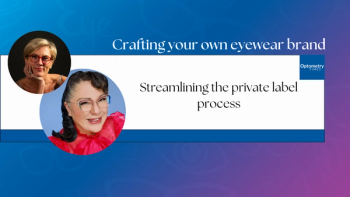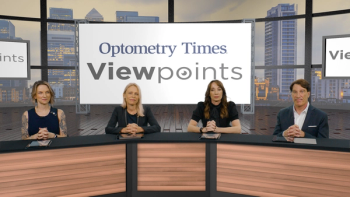
AAOpt 2024: Evaluating the impact of an HEV-filtering multifocal contact lens on halos and light scatter
Billy R. Hammond details the study, which explored how HEV light filtering, specifically in the 380- to 440-nanometer range, impacts visual comfort for patients with presbyopia.
Billy R. Hammond, a professor at the University of Georgia, Athens, presented research on high-energy visible (HEV)-light filtering in multifocal contact lenses at the 2024 American Academy of Optometry held November 6 to 9 in Indianapolis, Indiana. The study explored how HEV-light filtering, specifically in the 380-440 nanometer range, impacts visual comfort for patients with presbyopia.
The research utilized a crossover design for 35 participants with presbyopia who wore both a test lens with HEV filtering and a control lens without it, in randomized order, with a washout period in between. Identical except for the HEV filter, these lenses allowed the researchers to isolate the effect of HEV filtering on specific visual functions. The study examined whether the filtering could mitigate visual disturbances like glare and halos, which are common with multifocal lenses due to refractive light issues.
To simulate realistic environmental conditions, Hammond used a high-intensity xenon light source mimicking sunlight, measuring each participant’s contrast sensitivity and response to light scatter. Participants viewed a target under varying light intensities, and their tolerance to veiling scatter was assessed. Results indicated that the HEV-filtering lenses effectively reduced visual disturbances associated with bright light, such as glare, halos, and squinting, making them beneficial for outdoor visual comfort.
Despite this filtering, there were no adverse effects on essential visual functions like color vision, circadian rhythms, or acuity. While conventional metrics such as spectral sensitivity or basic acuity were unaffected, significant improvements were observed in visual functions that impact outdoor vision—especially glare and squinting. Hammond’s study suggests that incorporating HEV filtering into multifocal lenses could enhance visual comfort for patients with presbyopia without compromising essential visual clarity, particularly in high-glare environments. This development is encouraging for improving the comfort and performance of multifocal lenses.
The study was supported by Johnson and Johnson Vision Care.
Newsletter
Want more insights like this? Subscribe to Optometry Times and get clinical pearls and practice tips delivered straight to your inbox.













































.png)


